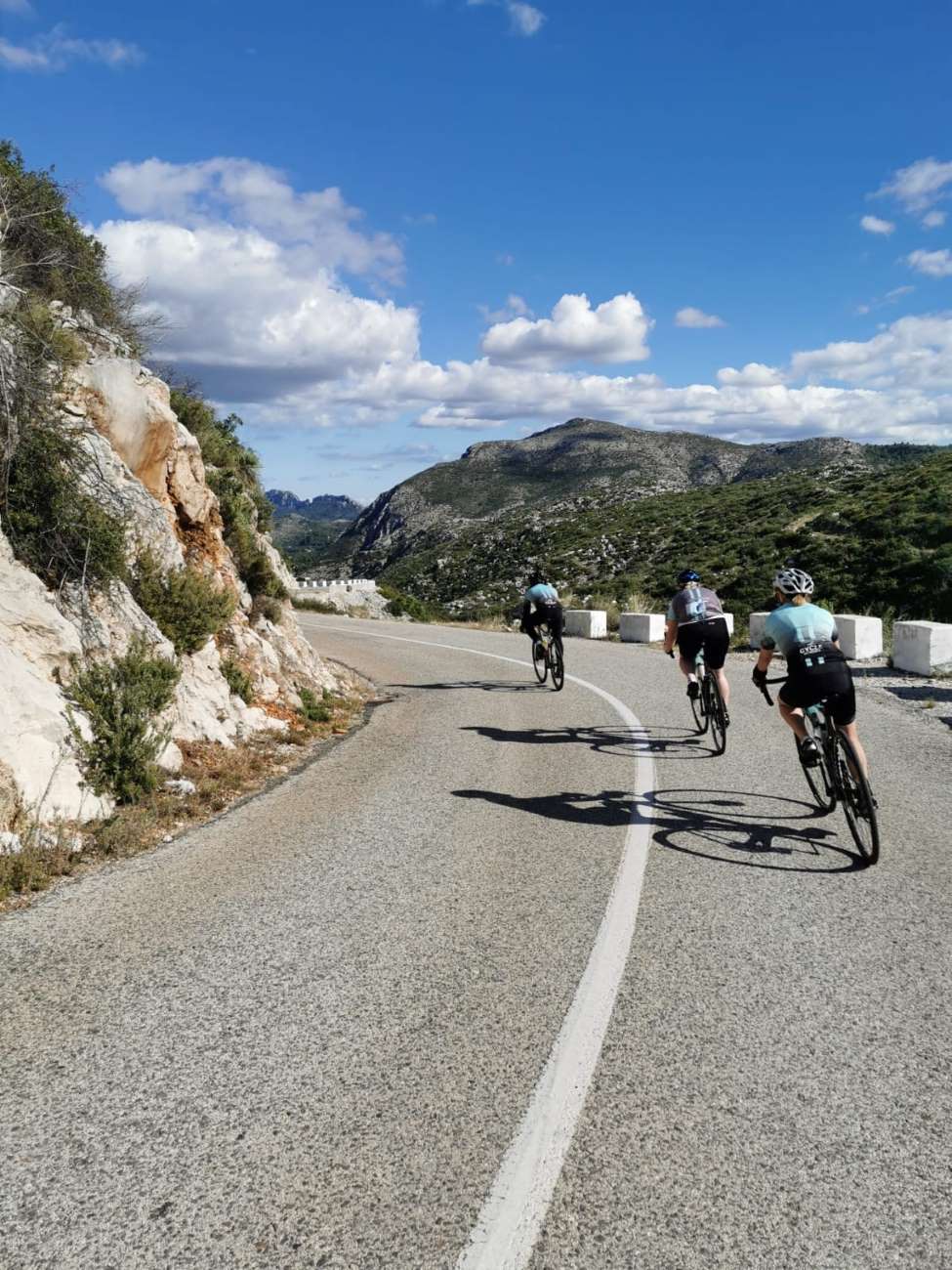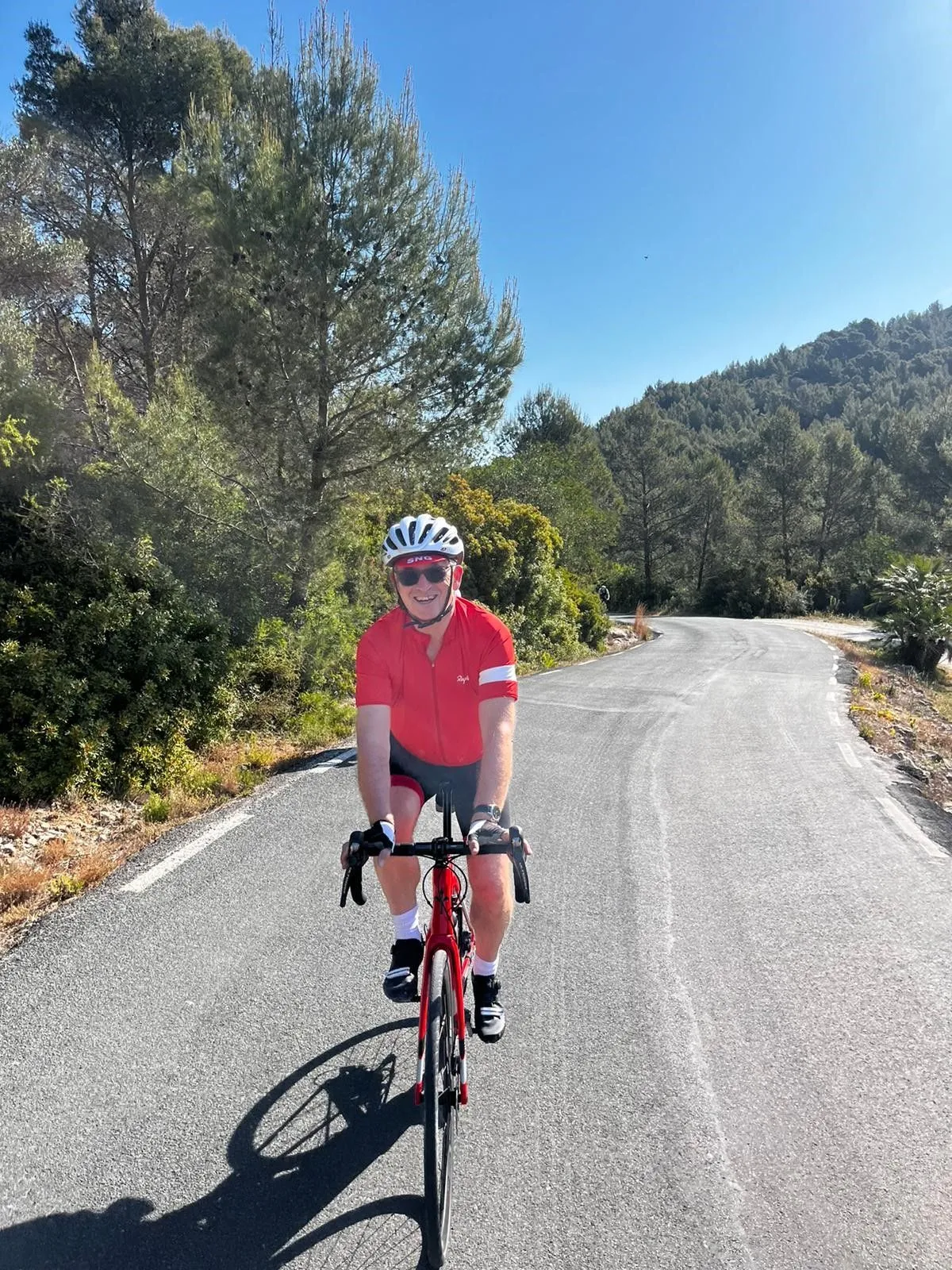Many riders I meet both at Cycle Retreats and out on the road have difficulty in descending and like anything, the more you do the better you get at it. But first you need to get the basics right before you start practicing.
To be clear, this is not about making you a faster descender! This is about making you a confident and safe descender, allowing you to enjoy a rolling descent rather than looking at it with dread.
So here are a few little tips to assist you: –
Tip #1 – Relax!
I know this is easier said than done, but think of you bike as an extension of you. If you are stiff and tense the bike will behave in the same manner, stay relaxed and fluid the bike will follow your lead. I can’t stress how fundamentally important this is. If you stiffen up the bike becomes hard to manoeuvre and turn.
Tip #2 – Bike position
Use the drops, this isn’t to get you into a more aero/aggressive position, and while you may think this is a little scary here’s the reason why it’s of benefit.
More secure hand placement on the bars in case you hit rough roads, it is harder for your hands to slip of the bars.
Easier to apply more braking force and avoid the lower arm burn you may have on a long descent.
Lowers your centre of gravity on the bike and pushes you toward the back of the bike increasing stability on the bike.
Tip #3 – Look through the corner and ahead
Don’t focus directly in front of your wheel, looking ahead allows you to pick your line through the corners and helps you to identify any hazards in the road allowing you to make gentle corrections to your line. Where you look is where your bike will follow. If you look at a pothole it is likely that you will hit it.
Tip #4 – Cornering, be smooth and pick your line
The times I see people cornering as though it is a 50 pence piece i.e. in straight lines. Pick your line you are looking for a consistent smooth curve, turn in and hold that line similar to how you would in a car.
Tip #5 – Pedal Position
Pedal position on the straight descents should be at 3 o’clock and 9 o’clock with the knees together in contact with the bike frame. It gives you more of a connection to the bike and a feeling of more security. In the corners, pedal position is extremely important. The outside pedal i.e. on a left corner your right foot should be down at the 6 o’clock position. Key point here is also to put some weight through the pedal in the 6 o’clock position, which provides increased stability to the bike and gives you that planted feeling in the corner.


Tip #6 – Braking
Ideally, scrub off the big speed before you get into the corner, but always brake smoothly and gradually applying more brake slowly, applying sharp braking just unsettles the bike. If you are braking in the corner, equal braking or more emphasis on the rear is a better option. Applying hard braking to the front loads the front wheel, and if turning into a corner this can result in the front of the bike washing out. The key is to brake early to remove the speed whilst in a straight line and apply gentle smooth braking to maintain your current speed through the corner. When applying the brake, shift your weight to the back of the saddle to provide more stability and prevent loading that front wheel.
Start on a small descent that you know to get the skills dialled in and the technique will soon become second nature allowing you to relax and enjoy the descents.




















